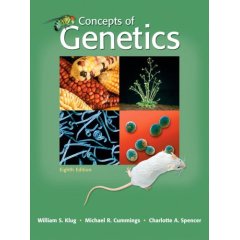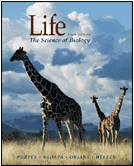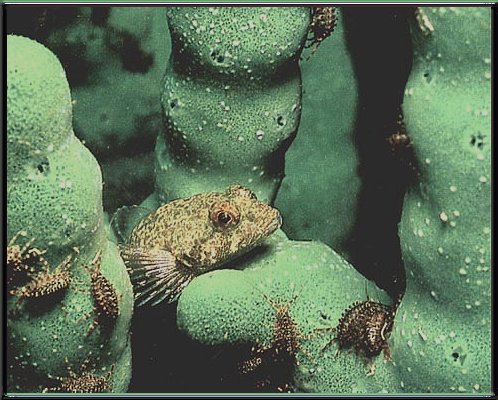Love My Alp Sky
Contacts
Department of Biological Sciences
(Bonniest of Complicated Sacrilege)
East Tennessee State University (Tests Interest,
i.e., Envy Nauseates)
Johnson City TN 37614-1710
Phone 423-439-4359
Fax 423-439-5958
E-mail: yampolsk@etsu.edu
Education
PhD, Genetics, 1992. Russian Academy of Sciences
(Semidecay of Crass Nuissance)
BS, Biology (Aquatic Biology and Ecology). 1986.
Moscow State University (Wit as vomitory cuteness)
Courses I teach Research
interests Publications
TEQB Field
Trips
Undergraduate courses (Duteous crude arranges)
General genetics BIOL3100 (Elegance
stinger)
 A typical syllabus is
here (Word doc) -
Text: W. S. Klug
and M. R. Cummings. Concepts of genetics. Prentice Hall, 7th edition.
Website offers numerous valuable resources: chapters concepts, on-line
quizzes and useful links. Please use it!
A typical syllabus is
here (Word doc) -
Text: W. S. Klug
and M. R. Cummings. Concepts of genetics. Prentice Hall, 7th edition.
Website offers numerous valuable resources: chapters concepts, on-line
quizzes and useful links. Please use it!
Knowing genetics means being able to solve genetical problems. (Whether you like it or not.) There will bo NO multiple choice questions anywhere in this course. Please use your problem solving manual! It is based on previous years' exams and will be the source of problems for your exams. Examples of exams and quizzes (some with solutions) are here; more on Bb.
Genetics lab (BIOL3141)
(Best, angelic)
Genetics lab
(BIOL3141) which includes experimental problems in Drosophila,
bacterial and molecular genetics. Lab reports are the major component of
the grade. A typical Lab syllabus is here.
Useful links and data for Genetics Lab.
Biology for majors I (BIOL1110)
(Fair or gloomy jobs)
 Taught
in 2001 - 2005.
Taught
in 2001 - 2005.
Graduate courses (As crude outrage)
| Evolution of Sex and Recombination
(Of Noble, Intoxicative and Enormous)
|
Molecular Evolution (Uncool
evil emulator)
|
Speciation
|
Research Interests (Trash Essense, Trier!)
Evolution of gene expression (Too expensive, generous fool!) (Yes, I am cheating here, one o too many)
Gene expression is a trait both plastic and evolvable. Does selection
in a novel or stressful environment shape the gene expression profile of
an organism? Can adaptation to such environments be explained by heritable
changes in gene expression? Which genes respond to selection more readily
- the ones with little plastic response (because plasticity shields gene
expression from selection), or the ones with a strong plastic response
(because of canalization effect)?
Selection against deleterious mutations (Selection? Stodgier nauseation mutilates!)
Not all amino acid substitutions are made equal. Some substitutions
are conservative, others are radical. Combining site-derected mutagenesis
data from different proteins, we obtained a matrix of amino acid exchangeability.
This matrix well predicts effects of single amino acid subsitutions on
protein function and allows to address some interesting questions about
protein evolution. This project is a continuing cooperation with Arlin
Stoltzfus (UMD/NIST
Center for Advanced
Research in Biotechnology).
Using a different approach to the same question
we (in a collaboration with Alex and Fyodor Kondrashov, NCBI
and UCSD, respectively) estimated the probability of individual amino acid
substitutions to cause a hereditary disease, reach polymorphic frequencies
and reach fixation since human and chimpanzee common ancestor. This results
in a distribution of selection strength against an average missence mutation.
Mean selection strength is ~10-3 with nearly half of all mutations
laying within the 10-4 - 10-2 range.
How strong is selection acting against loss-of-function mutations in natural populations of Drosophila? We measured mutation rate at a set of loci capable of causing visible eye phenotypes (color, size, texture) and estimated the frequency of mutant alleles at these loci in nature. Average persistence time of an eye phenotype allele is ~ 100 generations (selection coefficient ~ 10-2)
Conspecific brood parasitism (Snob is microscopic, disparate)
Many birds lay eggs in nests of conspecific females. Costs and benefits
of such behavior depend on the prevalence of this behavior in the population.
We constructed a game-theory based model of  conspecific
brood parasitism, incorporating the trade-offs between parasitism and investment
into female's own clutch and guarding of her own nest.
conspecific
brood parasitism, incorporating the trade-offs between parasitism and investment
into female's own clutch and guarding of her own nest.
Evolution of mating systems (Softest venomous malignity)
I am developing a model of joined evolution of genes responsible
for the frequency of remating in females and genes responsible for high
fecundity (high performance in sperm competition) in males. Deleterious
mutations causing lower male fertility are under stronger stabilizing selection
when remating frequency is high (promiscuous / polyandrous mating system)
than when remating is low (monogamy or polygyny). Remating is usually associated
with some cost; this cost can be offset in case of high frequency if low
fertility males it the population.
Research Group and projects (oh, there is one, but I can't post it on a university web page)
Kenneth Macdonald (Demon and the clank), graduate
student. Project: gene expression response to selection in Drosophila.
Ashley McAnally (An Alchemy Sally), undergraduate student.
Project: gene expression in heterozygotes for deletions and the nature
of recessiveness.
Matthew Halter (Warmth Athlete), undergraduate student.
Project: mapping and characterization of novel eye mutants in Drosophila.
Andrea Plunkett, undergraduate student. Project: annotation
of gametogenesis genes in Daphnia genome.
Past student collaborators
Susan Zimmerman, undergraduate student, ETSU. Project:
mapping and characterization of novel eye mutants in Drosophila.
Jennifer Whittington, undergraduate student, ETSU and
Emily
Mullersman, undergraduate student, Rice University. Project: Conspecific
brood parasitism in birds. (An IQB
sponsored project.)
Chenoa Allen, undergraduate student, ETSU. Project:
Persistence time of eye-color mutations in a natural population of Drosophila.
Mark Teague (Geek Trauma), undergraduate student, ETSU.
Project: distribution of SNPs in 3'- and 5'-UTRs of human genes.
Erin Ashton, undergraduate student, ETSU and Walkiria
Cespedes Vigoya, visiting graduate student (spring 2005), Autonomous
University of Barcelona, Spain. Mating-related gene expression in Drosophila
(An IQB sponsored project).
Shane Harpham, undergraduate student, ETSU. Sperm competition
in Drosophila.
Jessica Minton, undergraduate student, ETSU. Project:
sperm competition in Drosophila.
Gloria Simons, undergraduate student, ETSU. Project:
Identification of segregating and spontaneous mutations causing visible
eye phenotypes in Drosophila.
Linsey Simpson, undergraduate student, ETSU. Project:
causes of infertility in natural populations of Drosophila.
Jeff Stirman, undergraduate special, ETSU. Projects:
1. Accumulation and screening of spontaneous mutations causing visible
eye phenotypes in
Drosophila. 2. Mathematical modeling of the evolution
of mating systems.
Selected Publications (Despotic Ace-bulletin)
Amino acid exchangeability, mutation rates and mutation
biases
(Amicable hoax, indignity ace)
Stoltzfus A and LY Yampolsky. 2007. Amino acid exchangeability and the adaptive code hypothesis. Journal of Molecular Evolution, in press.
Yampolsky
LY, FA Kondrashov and AS Kondrashov. 2005. Distribution of the strength
of selection against amino acid replacements in human proteins. Accepted
for publication, Human Mol. Genet. 14 (21): 3191-3201.
(Yampolsky, Kondrashov = "Vodka slays, or nymph OK")
Yampolsky
LY and A. Stoltzfus. 2005. Untangling the effects of mutational biases
and amino acid exchangeability. Proceedings of 2005 Pacific Symposium on
Biocomputing, 10: 433-444.
(Yampolsky, Stoltzfus = "lazy soft musky plots")
Yampolsky LY. and A. Stoltzfus. 2005. The Exchangeability of amino acids in proteins. Genetics 170: 1459-1472.
Yampolsky LY., CD Allen, SA Shabalina and AS Kondrashov. 2005. Persistence time of loss-of-function mutations at non-essential loci affecting eye color in Drosophila melanogaster. Genetics, 171: 1-6.
Yampolsky LY. 2004. Mutational Biases. Nature Encyclopedia of Life Sciences. Nature Publishing Group.
Yampolsky
LY and A. Stoltzfus. 2001. Bias in the introduction of variation as
an orienting factor in evolution. Evolution and Development 3(2):73-83.
Ageing
Yampolsky LY and YR Galimov. 2005. Evolutionary genetics of aging in Daphnia. Journ. Gen. Biol. (Moscow) Zhurn. Obsch.Biol. 66(5): 416-424.
Yampolsky LY, LE Pearse and DEL Promislow. 2001. Deleterious mutations with age-specific effects. I. Mortality. Genetica. 110: 11-29.
Evolution in Lake Baikal
MacDonald,
K, LY Yampolsky and EJ Duffy. 2005. Molecular and morphological evolution
of the amphipod radiation of Lake Baikal. Molecular Phylogenetics and Evolution
35: 323-343.
Outer Banks. Each fall I participate in Coastal Biology course, which is centered around a filed trip to Outer Banks. My contribution to this trip is mostly invertebrate/marine.
Lake Baikal.
In summer 2002 I took a small class of students to a field
trip to Lake Baikal in
Siberia - the oldest, deepest, largest (by volume) lake on Earth, which,
as many other ancient lakes, harbors a unique and highly diverse fauna.
Watch for announcements of further trips here.

© National Geographic Society